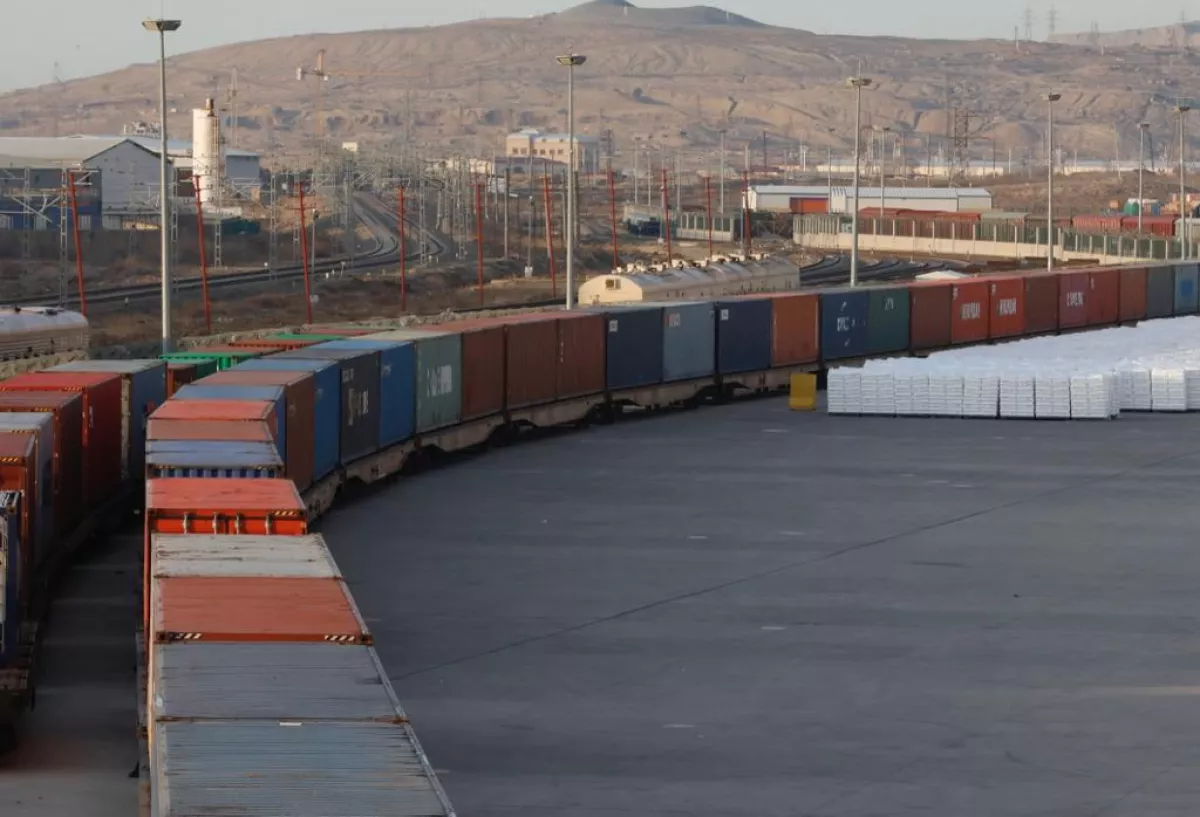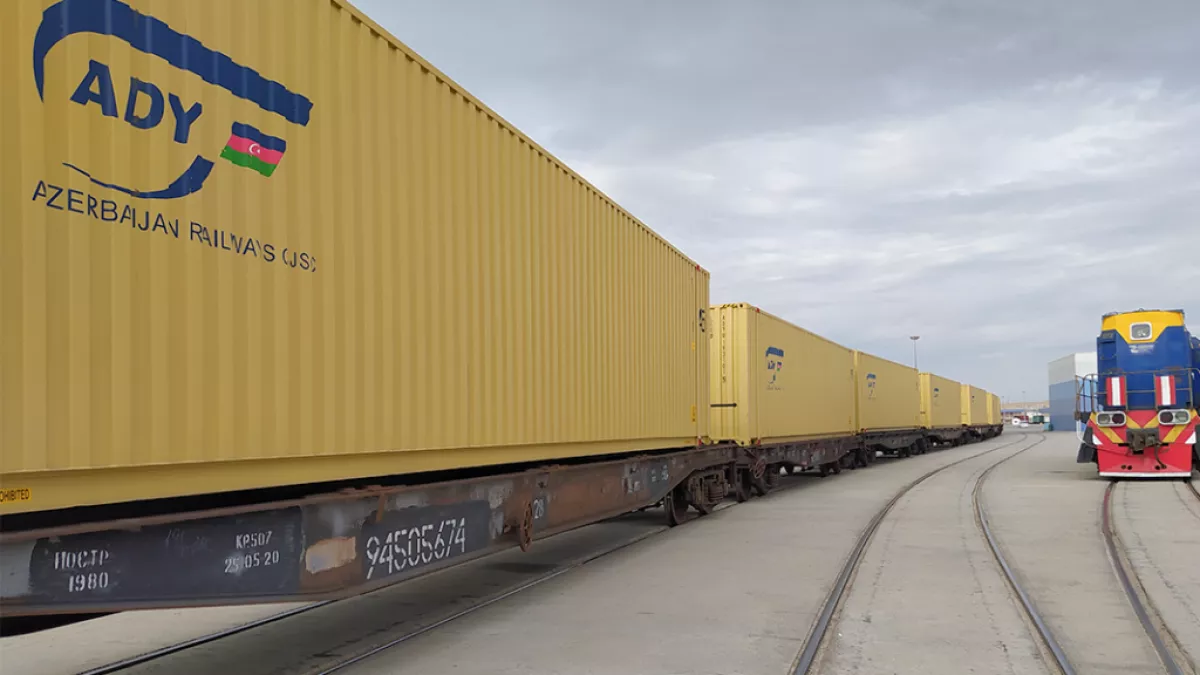Modernisation of Azerbaijan's railways The digital era of freight transport
As a key transport hub of the Middle Corridor, Azerbaijan is developing a modern transport and logistics infrastructure by implementing new IT solutions. The rapid digitalisation of all operational and cross-border processes is an essential step for the activities of the Azerbaijan Railways (ADY). To this end, the railway department has been carrying out a large-scale modernisation for the second year, focusing on the introduction of advanced IT solutions in freight transport, within the framework of a special digitalisation strategy approved by the ADY Supervisory Board.
According to the latest information released, ADY has introduced a new digital service for freight owners based on the "single window" principle and has also been implementing a unified electronic bill of lading since the beginning of the year.
As the experience of the European Union, the United States, Canada, China, Japan, South Korea, and a number of other developed countries in the Asia-Pacific region shows, today the key condition for improving the quality of operations and increasing profits in the railway sector is directly linked to the maximum use of multimodal transport schemes and the implementation of intergovernmental integration schemes based on digital data exchange. Electronic platforms for the exchange of transport documents and permits are actively developing in the post-Soviet space today.
In particular, Azerbaijan has established multilateral cooperation within the framework of railway freight digitalisation projects with logistics companies from Europe and China on alternative Trans-Caspian routes of the Middle Corridor, where Azerbaijan’s position is quite strong. This includes digital initiatives actively supported by Baku within the EU-initiated Transport Corridor Europe-Caucasus-Asia (TRACECA), as well as the Trans-Caspian International Transport Route (TITR) implemented by countries in the Caspian-Black Sea region.
Similar processes have also emerged within the framework of the International Transport Corridor (ITC) North-South. In short, the work on the digitalisation of railway transport goes far beyond national or narrow regional frameworks. Furthermore, today the task has been formulated to ensure the unification of digital transit documents within such structures as the EAEU, BRICS, SCO, ASEAN, and, of course, the Organization of Turkic States (OTS).
The creation of electronic queue mechanisms at borders, digital document exchange, the use of electronic seals on transit cargo, and special trackers on road transport—all of these help freight forwarding companies deliver goods more efficiently, ensure more reliable control, and track supply chains, including international ones. The implementation of digital cargo tracking technologies and the transition to electronic document circulation in freight transport are crucial for speeding up and simplifying cross-border procedures. This also includes tools for the electronic issuance of permits and transport accompanying documents in the "single window" mode, technologies for collecting and verifying information about carriers, and the creation of their ratings based on freight transport data.

The development of digital mechanisms in the railway system is primarily focused on ensuring seamless multimodal container transport, fully processed in electronic format. This is especially important when transporting goods by ships, followed by their transshipment onto trucks or railway trains. Until recently, all these procedures were accompanied by a vast amount of paperwork and approvals during transshipment. The prospects of digitalisation effectively counteract this bureaucracy and paper-based routine: the implementation of smart contracts using blockchain technology simplifies interaction between partners and makes freight transport completely transparent, establishing a system of digital trust. This, in turn, significantly simplifies the work for carriers and consignees.
The most significant progress in digitalisation in recent years has been achieved by Azerbaijan’s partners in the Trans-Caspian International Transport Route (TITR). Recently, Kazakhstan's Deputy Minister of Transport, Talgat Lastaev, reminded that Astana had reached an agreement with China to increase the number of container block trains along the Middle Corridor to 600 per year.
"The dominance of multimodal transport and the presence of numerous border crossing points along the Middle Corridor require an increase in the digitalisation of logistics for direct container transport from China to Europe. To this end, on November 16, 2023, the railway administrations of Kazakhstan, Azerbaijan, and Georgia established the joint venture Middle Corridor Multimodal Limited on a parity basis," said Lastaev.
According to him, Kazakhstan has already implemented a system for exchanging permit forms with 42 countries, including the introduction of an electronic permit mechanism with Uzbekistan and China, which will allow a significant portion of the documentation to be transferred into digital format.
Similarly, Azerbaijan's railway department is moving along the same path, also expecting a significant increase in freight transport from China via Kazakhstan. "The 306th container train was sent from China via the Middle Corridor in 2024. Overall, freight transport along the Trans-Caspian route has increased compared to last year," noted Rovshan Rustamov, Chairman of the Azerbaijan Railways (ADY), in mid-December. "Next year, we plan to triple the number of container trains from China."
ADY's plans for 2025 include a threefold increase in the transit handling of block trains from China to Azerbaijan and Europe, with the number reaching 1,000 by the end of the year. Moreover, domestic railway operators have established reverse freight transport from Azerbaijan to China. Since November 24, the first export block train from Baku to Xi'an, consisting of 62 40-foot containers, has been launched.
By the end of the year, Azerbaijan plans to send 15,000 tons of export cargo along this route. Against the backdrop of the dynamically increasing volume of transit cargo, the railway departments of China, Azerbaijan, and Kazakhstan are working systematically to speed up the customs clearance process, simplify the application process for transit codes, standardise documentation, and create a unified digital information system.
Currently, the information systems of Azerbaijan's and Kazakhstan's railways are integrated with the customs module of the DTC (Digital Trade Corridor) Tez Customs platform, and similar work is planned with the railways of Georgia. In 2025, partners in the TITR plan to launch the "Block Digital Corridor" platform, which will unite document circulation, customs clearance, and cargo tracking procedures into a single ecosystem throughout the entire transport route.

In 2023, ADY updated its team, developed an information security policy, introduced project management standards, and implemented new systems such as MS Project and Atlassian Jira, which improved the transparency and reliability of all digital processes. ADY's achievements also include the integration with the international logistics platform from Global DTC to enable data exchange on cargo and digital services such as Track&Trace, with a primary focus on automating operational processes. Recently, a tariff calculator was implemented, which is now available on the ADY website (www.ady.az). This web tool has significantly improved the quality of freight cost calculations, accelerated the process, and simplified interactions with customers.
According to the information released recently, ADY specialists introduced a new digital service for freight owners based on the "single window" principle. Among the key innovations is the ADY Smart platform, which allows real-time tracking of all stages of cargo transportation. The cargo documentation process now takes only 20 minutes, thanks to the digital permit system, which eliminates the need for paper-based document circulation. The creation of the ADY Smart platform is part of the expansion of cooperation in infrastructure digitalisation within the framework of convergence with the North-South and East-West transport corridors.
Another important step taken by ADY was the implementation of the unified electronic bill of lading CIM/SMGS, which simplifies international transportation, accelerates customs procedures, and reduces risks associated with border crossings, improving the convenience and speed of freight transport and promoting the development of international trade.








